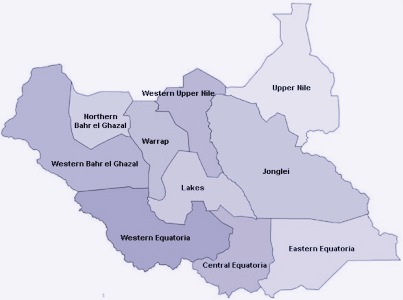HIV prevalence highest in S. Sudan’s Equatoria region
March 21, 2016 (WAU) – South Sudan’s Equatoria region currently has the highest rate of Human Immune Virus (HIV) prevalence rates in the country, Mumtaz Mai, the strategic intervention advisor for the UN HIV/Aids agency (UNAIDS) in South Sudan has disclosed.

“In an annual research, these areas have been confirmed the most places with higher pandemic virus disease infection people mostly young men and women due to cultural in heritages. Cultural behaviors develop among the local communities and live style at the camps sketch them at high dangerous risk,” said Mumtaz.
“Since the 2013 conflict erupted in the region, south Sudan remain at high risk of HIV infections mostly women and young men rising the average from 13,000 to 18,000 just from nearly 2013 when the conflict broke out within the country,” added the official.
Most infection rates, Mumtaz said, were high due to stigmatization, which remains high since people in most communities still discriminate against those with the deadly virus in the world’s youngest nation.
In September 2014, South Sudan Aids Commission raised an alarm about the swiftly-rising HIV/Aids pervasiveness rates, amidst the conflict that engulfed the nation, displacing millions of its civilians.
South Sudan, according the commission, is one of the sub-Saharan countries relatively hard hit by impacts of the deadly disease today.
During the UN high level meeting on HIV/Aids, which took place in New York in June 2011, a new declaration, entitled “Political Declaration on HIV and AIDS: Intensifying our Efforts to Eliminate HIV and Aids was unanimously adopted by member states on 10 June.
The declaration set new targets and called on member states to redouble efforts to achieve by 2015, universal access, with a view to attaining the Millennium Development Goals. The declaration also recognised key populations at higher risk of HIV infection, citing men who have sex with men, people who inject drugs and sex workers.
(ST)
